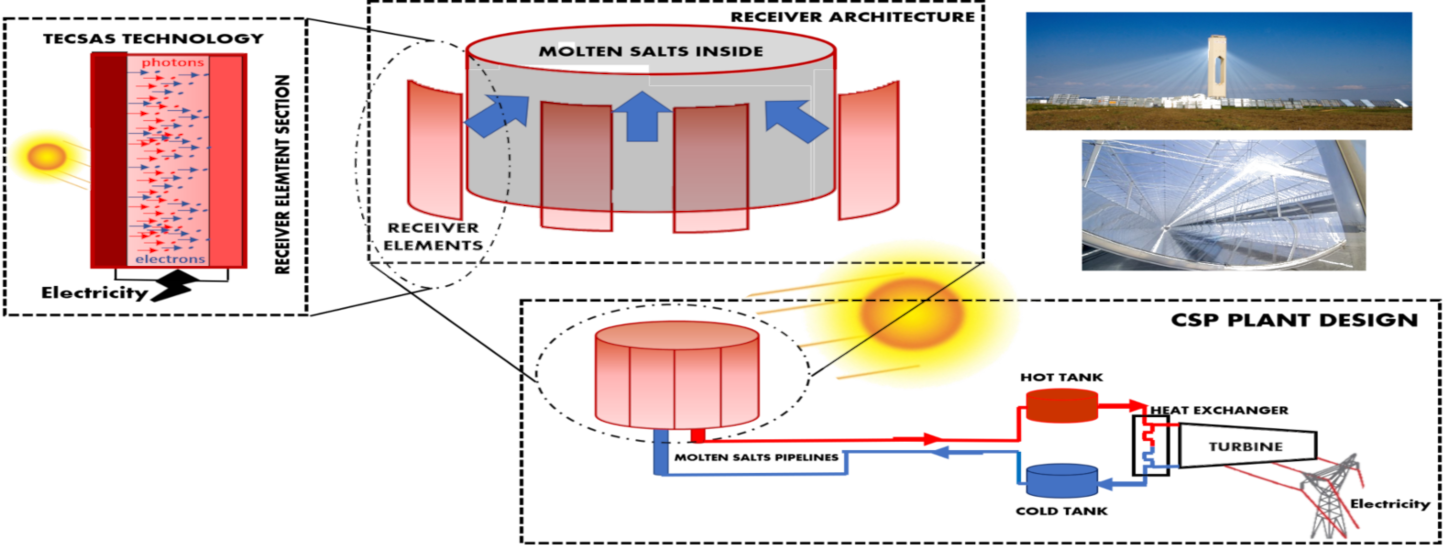The main goal of the TECSAS project is to analyse the feasibility of small scale CSP plants (up to 1MW), enabled by our proprietary thermionic passive solar receiver based on a scalable, solid-state and efficient technology (patent n. EP2893549, “Thermionic converter device”). TECSAS is designed to replace traditional passive receiver elements, with new components acting as a conversion topping cycle of present CSP technology (i.e., upstream conversion) and allowing a maximum increase of the CSP conversion efficiency from 20% up to 45%, potentially more than twice as much state-of-the art performances, regardless of the plant size.
Thermionic emission component is the core innovative element of the conversion unit developed by the CNR team within the recently completed AMADEUS FET project, in combination with a thermophotovoltaic cell. While ultra-high operating temperatures (>1000 °C) high-efficiency thermionic conversion is the main focus of the AMADEUS project, in TECSAS we aim to reduce the operating temperature to a range from 150 °C to 1000 °C, the highest part of which would allow to implement the converter in small scale CSP plants.
TECSAS can be integrated in both line and focal concentrating systems, which largely dominate the CSP market, basically substituting the current passive receiver. In fact, the thermionic-based conversion stage acts a topping-cycle converter working at higher temperatures than the heat transfer fluid, in perfect compatibility with the operating parameters established by the optics of the conventional CSP plants. Standard solar receivers are made of selective materials with the unique function of transforming the solar radiation into thermal energy. The engineered thermionic-based receiver is similarly made of highly selective materials to absorb efficiently sunlight and minimize the optical losses at high temperatures, however it is able to produce directly energy from sunlight and, at the same time, to feed the residual heat to the storage/thermal conversion unit with high thermal-to-thermal efficiency. In other words, the engineered thermionic receivers act almost as the standard receivers by adding a significant electrical output power (with a 35% additional solar-to-electrical conversion efficiency, reasonably achievable by the technology once completely matured), additional to that provided by the thermodynamic unit. The production cost of the technology is expected to be small if compared to the costs of the other components, thus allowing TECSAS to further reduce CSP-produced LCOE thanks to the additional electrical output power with a reduced cost of the technology.
Technology


